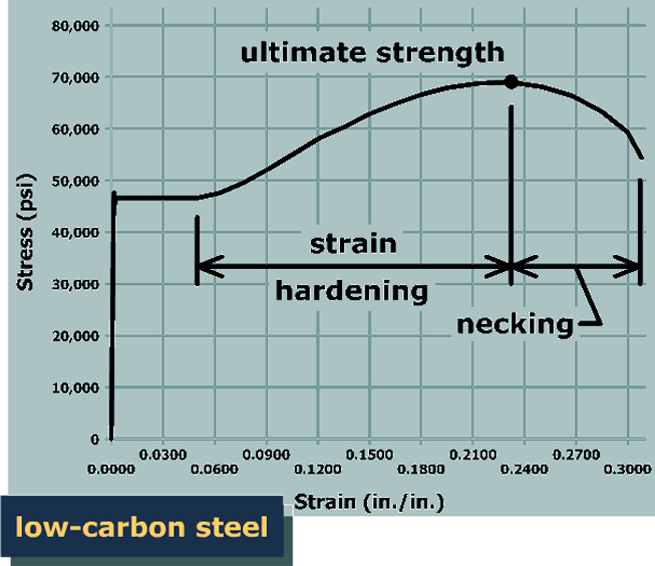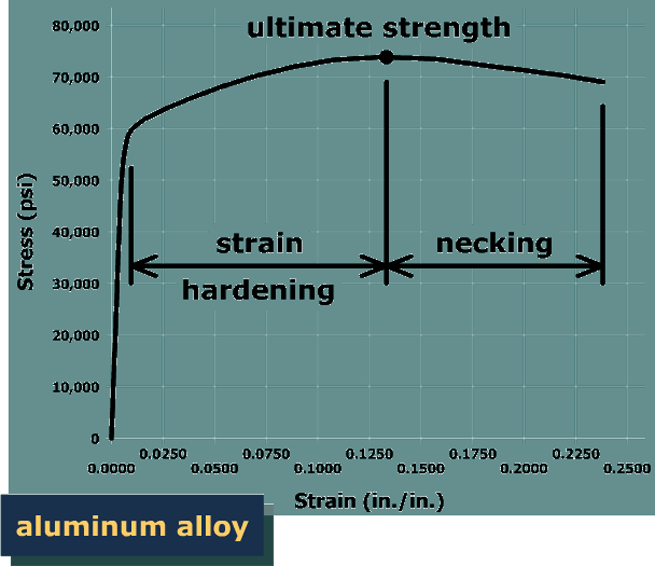In the yield and strain hardening regions, the cross-sectional area of the specimen decreases uniformly and permanently. Once the specimen reaches the ultimate strength, however, the change in specimen cross-sectional area is no longer uniform throughout the gage length. Past the ultimate strength, the cross-sectional area begins to decrease in a localized region of the specimen, forming a contraction or "neck." This behavior is referred to as necking.

